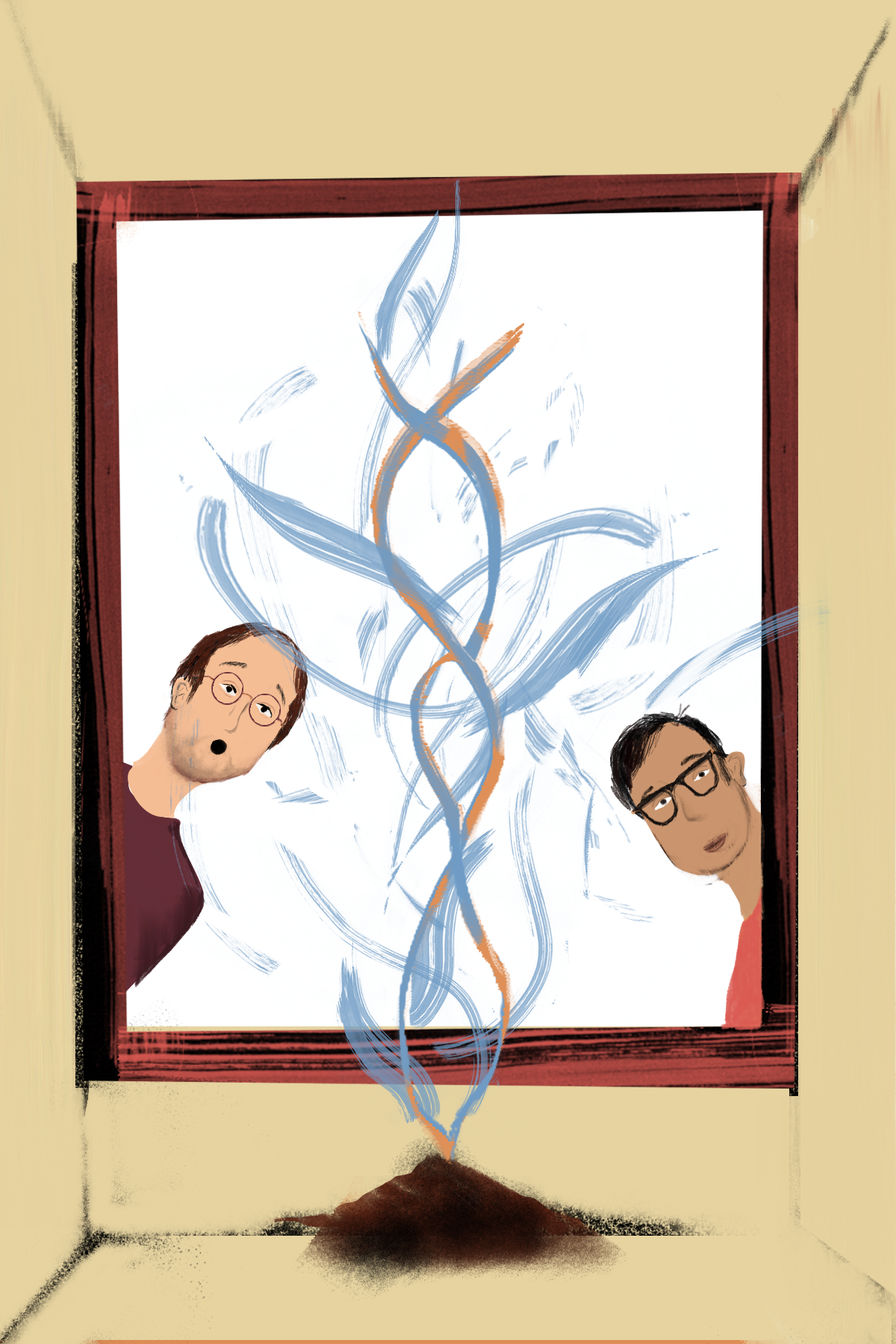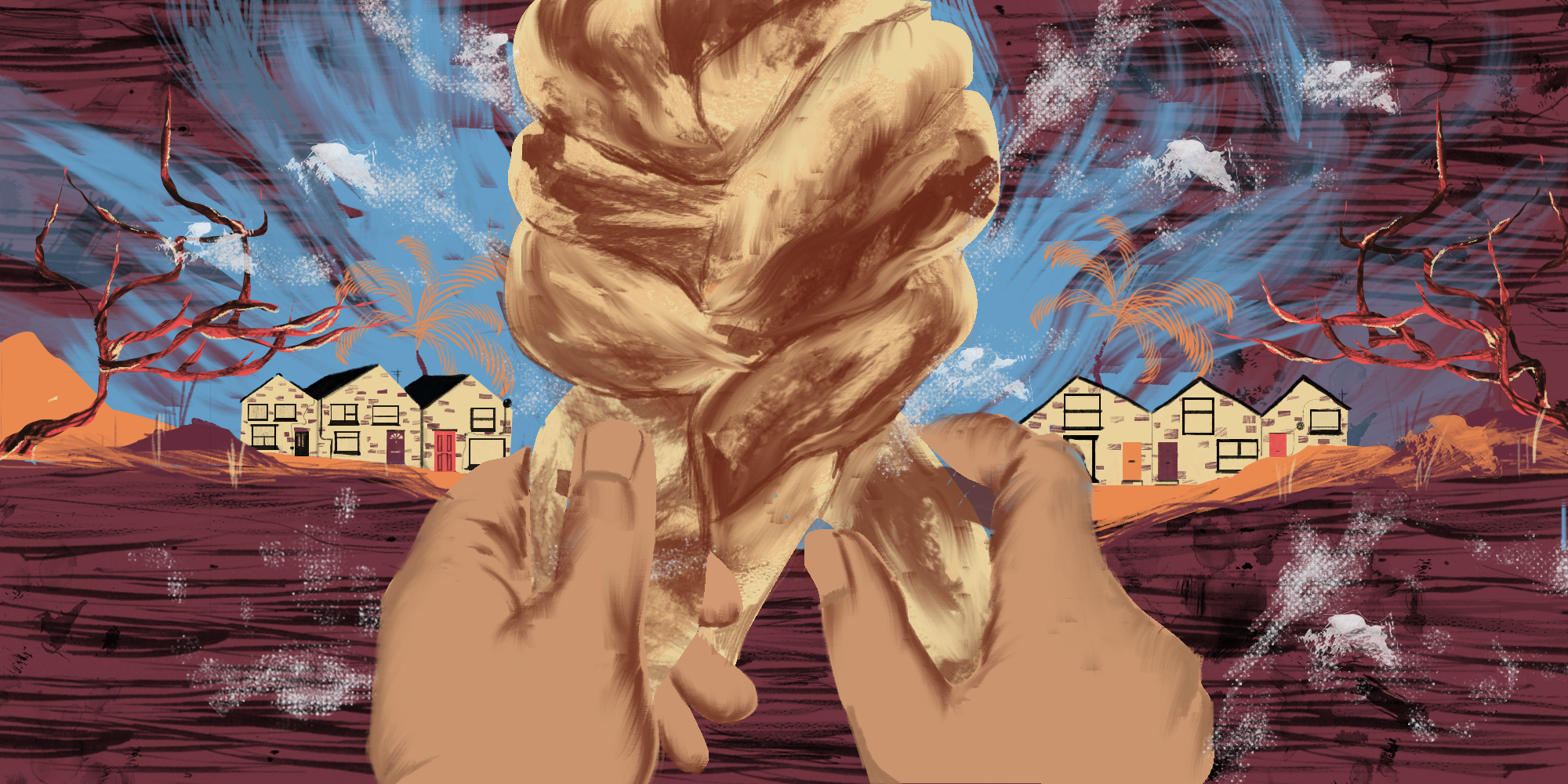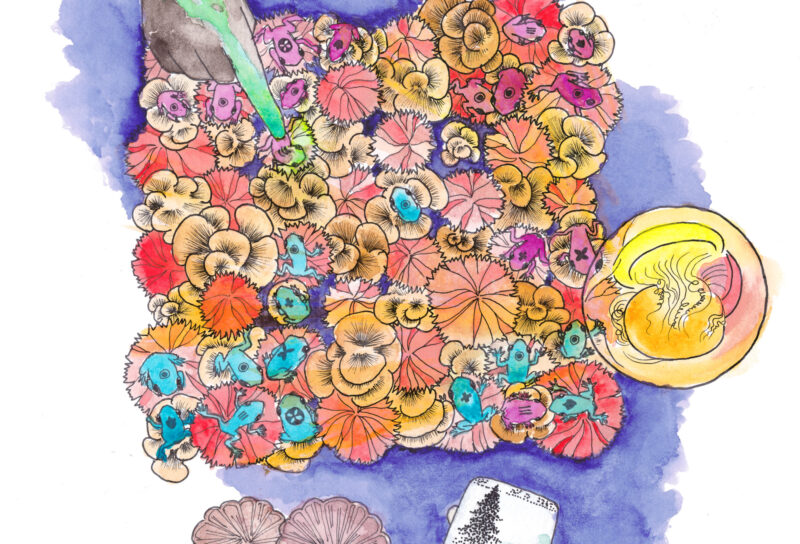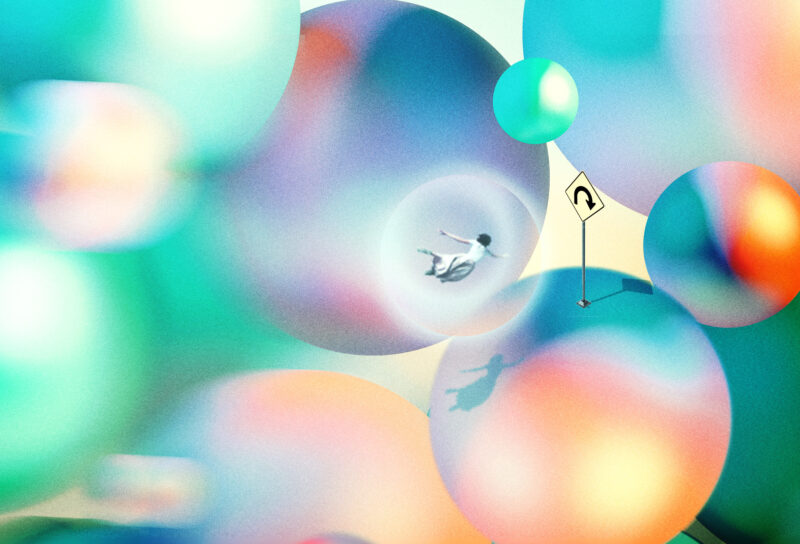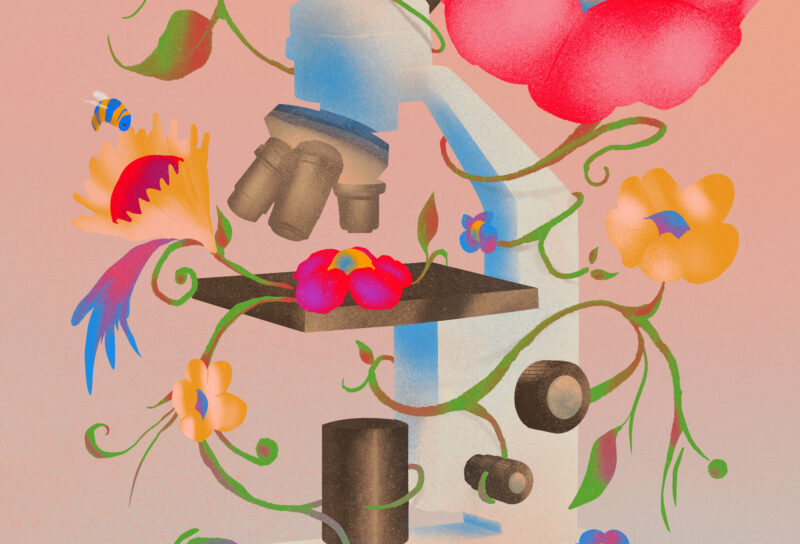Omnes Generationes
Where does food come from?
It is March, 2016. I’m at Logan Airport and should soon be en route to London, if only I can make it through this TSA checkpoint with a five-pound bag of flour in my backpack.
I’m not doing this for the thrill of smuggling or because I desire to be interrogated. No: I have just found out the hard way that American flour is different from British flour, culminating in The Great Croquembouche Catastrophe of 2015. And failure, this time around, simply isn’t an option. I am meant to bake the challah for my brother-in-law’s two-hundred-person wedding, sanctifying the meal for every distant relative and friend that I, by virtue of living on a different continent, haven’t met before and may never have the opportunity to meet again.
This story does not seem to move the agent who eyes the large bag of white powder emerging from the scanner. All I can do is smile and try to charm my way out of purgatory. In the end, I walk away with a salvaged package of King Arthur bread flour thoroughly wrapped in TSA tape. A minor miracle.
My in-laws receive the story with sharp humor, ribbing me lovingly for being so particular about flour, but I don’t have time to explain. There’s work to be done. A large pile of precious white dust has made it from my luggage onto the counter. I massage eggs, honey, olive oil (the best I could buy while still making rent), salt, water, and my special yeast into the growing loaf. Then there’s the matter of architecture: I’ve practiced the braids at length, but it’s clear that what I had in mind won’t fit this London oven. A quick re-work averts disaster, and I sit cross-legged anxiously peering into the chamber where the plaited dough springs to life and transforms into bread. When it comes out, it cools, is carefully wrapped, and is gingerly transported to the art deco miracle that is the Royal Institute of British Architects. That night, my father-in-law tells of my misadventures at Logan Airport to a crowded room of wedding guests; he sings the hamotzi while ceremoniously drawing a knife over the auburn crust; I dance the horah faster than I ever have before and sweat through my suit; my husband and his older brother break into fits of giggles reciting the grace after meals.
In my life with my husband, Paul, challah is much more than bread: baking it punctuates my memories of our time together.
Near the very beginning, I am twenty-eight and have just burned myself pulling loaves out of the oven one crisp spring Friday morning. I am distracted because our relationship seems doomed. I have been seeing Paul for four months and he has just accepted a job here in Cambridge, while I have been contemplating post-docs on the West Coast. I have lost an entire night’s sleep to the worries.
Next: I am standing in my kitchen trying to remember how to braid a six-strand loaf under the watchful gaze of my husband’s advisor who is staying with us for the night. He is kind and patient, but I am nervous and keep wrecking the strands. Or here, I am laughing with my mother-in-law, Ruth, at the counter as tiny rivulets of egg and water break through the dam of flour; these loaves will be the first she’s ever made.
And then, I am soaking precious spices for the bread celebrating an as-yet-unborn baby who will never enter our house (a misunderstood gesture, an unread text); the adoption fails and the loaves are thrown away, untouched, as we prepare for an especially long journey home.
Finally, my friend Milan drops off a prototype of challah he has designed for my wedding, only two weeks away: it is as delicious as it is beautiful; I can never recreate it. I’d burn with jealousy if my mouth weren’t so full.
This swirl of time has one last stop, further back than I had bargained: we are standing at Tab’erah on the Sinai Peninsula, in a scene narrated in the Book of Numbers of the Hebrew Bible. Moses has just finished his intercession on behalf of his people. For decades, almost a generation, they have subsisted on crystalline manna the size of coriander seeds, which collects like dew overnight. It is ground and cooked into pats that taste like oil cakes; there’s a double portion on Friday mornings to tie them over the Sabbath. They are sick of this food: “We remember the fish that we ate in Egypt free of charge, the cucumbers, the watermelons, the leeks, the onions, and the garlic. But now, our bodies are dried out, for there is nothing at all; we have nothing but manna to look at.” In the Judaism that Paul has brought into my life, food has always been a symbol of perseverance in exile.
I suppose it’s conceivable that these cakes from ground manna three thousand years ago are the same thing as the pillowy Viennoiserie I bake on Thursday evenings in preparation for next day’s sabbath. But the dish has evolved profoundly over time. In my mind’s eye, I see coarsely ground wheat puffed into orbs; aged sourdough gently shaped into voluptuous boules. In Northern Europe, eggs are introduced; fragrant honey is easier to come by here than sugar; oil, instead of butter, will make sure that the bread remains pareve for Shabbat. From there, I see the refinement of the flour, the labyrinthine plaiting. I see the different vogues of shaping and forming the loaves, the different seasonings that adorn the bread.
Every Friday evening is a reminder that each challah is as significant as its predecessors, and even the moment that originated this tradition; the Torah is not in Heaven, after all. All previous challoth, even the ones to come, are convened at this one point, this one Shabbat we are now celebrating: no matter which hands have shaped it or how it is made, the plaited bread on the board is the same loaf that was eaten by the generations of our family that preceded: by Moses’ plaintive followers at Tab’erah, the Varsani in Spain, the Confini in Bulgaria, the Jacobi in Germany, the Kosminski in Poland, and by our children, should they come, in America.
যেতে নাহি দিব
Perhaps it’s all nostalgia.
Legend has it that in 1658, when Job Charnock of the British East India Company arrived at Sutanuti in Bengal, he was greeted with the traditional dish of cooked pulses and rice, khichuri. In Bengal, this dish is still a staple of cloudy Spring days, when its bright yellows and reds flatter the grey skies and sheet rain. Onions, cumin, turmeric, and tomatoes fried in mustard oil form the base for cooked vegetables — in my recipe, potatoes, cauliflower, peas and beans — that are simmered with dal and parboiled rice, topped with ghee, garam masala, and green chili peppers. During the monsoon, it’s served in the afternoons with ilish fish taken from the Ganges, dusted with a coating of turmeric and salt, and lightly fried. Onion fritters sit on the side of the plate with a teaspoon of achar; peels of raw onion, and raw green chilis are tacked onto the plate as an afterthought; green mango chutney to finish.
This food didn’t stay in India, of course. Khichuri would be anglicized as kedgeree and served for breakfast all over the Empire: smoked haddock, simmered with bay leaf, served with rice, peas, and curry powder. Heavy cream and sultanas finish off the dish, with a dribble of lemon. This meal is something to wake up to, with milky tea, buttered toast and jam on the side. This is only one of the dishes that has marked Britain throughout its colonial expansion. Tea, imported from across the globe, is a cornerstone that dictates the rhythms of life, served at practically every gathering. Doner kebabs, peri peri chicken, curries — not to mention the ultimate cross-cultural contrivance, chicken tikka masala — all abound as cultural staples. Their imprint on British life bubbles up after late nights of drinking as sloppy piles of cash are traded for precious packets of food in folded newspaper or styrofoam containers.
Our wobbly-legged bureaucrat on the shores of swampy Bengal may be seen as an early omen of this exchange. Was there disgust or curiosity that possessed the East India officer when the clumpy dish of rice and lentils greeted him fresh off the boat? What was it like for the life-long Londoner, raised on mutton and beef, to live on foreign grains and vegetables never seen by the nation whose interest he represented and under which this foreign land will come to be ruled? To step off and taste is to become part of the country that will determine his future. There are decisions to be made; we have lived and died, and still live, in their wake.
We are told that a Rajput Princess is prevented from performing sati (self-immolation) at her husband’s funeral pyre; she changes her name to Maria and marries this man from London. Later, there are rumors among his Puritan colleagues that he has converted to Hinduism. Sutanuti, where Charnock landed, ate khichuri, married, and buried his wife twenty-five years later is where he will go on to establish the administrative center of the British East India Company. That swamp village will continue to grow and be subsumed into the larger city of Calcutta, soon to become the seat of the British Raj, overseeing all of India. Today, a few blocks away from the Victoria Memorial, in the graveyard of St. John’s Church on the banks of the Hooghly River, there is a diminutive Indo-Islamic monument carved from Charnockite. It shelters a patch of land that never quite managed to remain for ever England.
A moment’s pity for the petty bourgeois administrators that plotted the takeover of the known world. EM Forster captured their longing for home in A Passage to India. During tea, they fret over the inadequacies of the imported dishes.
[…A]nd the menu was: julienne soup full of bullety bottled peas, pseudo-cottage bread, fish full of branching bones, pretending to be plaice, more bottled peas with the cutlets, trifle, sardines on toast: the menu of Anglo-India. A dish might be added or subtracted as one rose or fell in the official scale, the peas might rattle less or more, the sardines and the vermouth be imported by a different firm, but the tradition remained; the food of exiles, cooked by servants who did not understand it.
Nostalgia touches the seventeenth-century explorer just as it did my parents, half a world away from the land where they were raised.
For my mother, born of strict atheist stock, it wasn’t the Hindu prohibitions that weighed heavily on her during the TWA flight from Paris to New York in 1974. Nor was it the famous bittersweetness of exile. It wasn’t a fear of flying either, even though this was her first time in the air. It wasn’t even that she was on the verge of having her Anglo-Indian education tested in America, her practice of medicine scrutinized along with her understanding of culture, of language, of clothing. No: it was the food.
Raised to become a doctor, Rita Agarwala had spent her days in India poring over textbooks and experiments in the lab, rather than sitting beside my grandmother in the kitchen absorbing the arcane techniques required to feed a family. Now, a world away — on her journey from Kharagpur to Kolkata, to Dhaka, Paris, New York, then Chicago — the sole thread that connected her home was a slender collection of hand-written notes from my grandmother outlining the dishes of her childhood.
I imagine my mother six miles above the North Atlantic, mid-air between Europe and the Americas, blissfully unaware of the importance of these notes until she is served an unremarkable tray at lunch time. She tells this story to this day, of making her first journey outside of India, of unwrapping the platter, of her utter shock and horror at seeing this plate of salad greens, with a plastic cup of dressing on the side, and realizing that it was meant to be eaten: what am I, a goat?
My grandmother’s notes may have seemed like a refuge, but, stored in a blue binder under the counter in a tidy house in the Western Suburbs of Chicago, they came to form the basis of a life of frustrated meals and homesickness. The recipes had to be adapted to the realities of the new land they found themselves in. The closest store that sold the necessary spices was an hour drive from the house. Fish, which forms the basis of the Bengali diet (and, some might say, the Bengali psyche) was too expensive. They had to get it frozen; a flavorless, bland simulacrum of the fresh fish back home. Even familiar fruits and vegetables tasted off. There were no daily trips to the bazaar to identify provisions that had been freshly picked from the fields the night before. Instead, food was shipped from far away. Month-old produce was arranged in chilled grocery store displays to be picked up on the weekends and molder in the fridge all week.
To my mother and father, my grandmother’s notes were nostalgia: simultaneously hope and torture. My sister and I have inherited this sense of comfort and loss. Almost every meal we ate growing up was compared to the ideal from India. And the losses would continue. As adults, my sister and I have gone to great lengths to recreate these meals, only to find that they are a culinary language we don’t quite understand. My grandmother’s notes are hints at a heritage we will never know, having been cut off from the India of our parents and relatives. It is not everything, but the food is a key to the world my parents left behind: I cannot let it go.
As part of this striving, I have been laboring recently to recreate bhejitebil chop — fried vegetable cutlets. My grandmother’s notes on this are odd and hint at the food’s Anglo-Indian origin, transliterating the English “vegetable” rather than using the Bengali word, anaz. The recipe suggests seasoning cooked potatoes, beets, and carrots mixed with raisins and peanuts, and scooping them into oblong balls to be breaded and deep-fried. It is almost identical to a Scotch egg, adapting the deep-fried minced pork dish to vegetarian India.
When I tell my mother about my most recent attempt, there is a pause in the conversation. It dawns on me — and not for the first time — that I’m a late receiver in an international game of recipe telephone. These fritters are a strong enough attempt, but are ultimately a misunderstanding of the food; a rushed shortcut that reminds my mother of everything that has been lost over the years: of my grandmother, of having tasted the warm chop from her hands, her notes kept under the counter on yellowing paper, the flight from Paris to New York.
Where does food come from?
There is nothing ancient about the tea leaves my father fusses over every morning: they come from plants that were introduced to the soil of the Darjeeling hills and the Assam valley by British merchants and landowners less than 200 years ago. My mother’s vegetable chop? I can’t pinpoint its beginnings, but can start with each of its component parts: the modern carrot is thought to have been bred in Afghanistan in the 10th century CE; beetroot is much older, Middle-Eastern or Egyptian in origin, probably spread across Europe and Asia by ancient trade. Potatoes come to Europe from the Andes mountains in the late sixteenth century. They made their way to India via Portuguese traders in the South and were introduced to Bengal through the British. Around the same time, Job Charnock of the East India Company first tastes khichuri.
בֹּ֖א אֶל־פַּרְעֹ֑ה
We must remember: the plagues that were visited upon Egypt were also miracles.
The disasters Moses and Aaron inflict on the state are a clear mark of divine retribution. But in the logic of Pharaoh’s Egypt, the ability to reproduce and match a rival technology implicitly ensures the ability to remedy or reverse it. First, the waters are turned to blood; Egypt becomes a land of starvation and scarcity. But Pharaoh and the magicians are on familiar ground: they are able to do the same; there is no change in course. Next, there is the plague of frogs called from the waters by Aaron’s staff. Again, the magicians match miracle with technology; no reason for concern.
Perhaps it dawns on Egypt that these calamities are divine miracles as their technology begins to fail. A plague of gnats comes next, the magicians falter. Soon, they are inundated by the plagues of the locusts, of the cattle, of boils, of pestilence, of hail, of darkness. Despite the suffering of the Egyptians, despite the one clear solution in front of him — to release Moses and his people — it takes his personal loss, his first-born, for Pharaoh to recognize the divine source of this devastation.
Were there omens? Before the plagues, before the suffering inflicted on his people and the State, were there signs that all this tragedy could have been averted?
The tools we’ve developed for averting our impending apocalypse seem quaint, but have proven themselves elegant and powerful. The ones I know best as a biologist have been fighting hunger and disease since the dawn of civilization. Archaeological evidence of beer-brewing comes from the Near East 12,000 years ago. We’ve known, shaped, and exploited these microbes from before agrarian society and cities had been conceived of or formed: grain, left unattended, will bubble and produce potable alcohol, safer for consumption than polluted water or food. This technology, the ability to produce safe food and drink, is so powerful, so central to our conception of civilization that it is etched in the earliest forms of literature: in the epic of Gilgamesh dating from second millennium BCE, the wildman Enkidu is tamed by the prostitute Shamhat, and becomes civilized only after he eats bread and becomes drunk on beer. It is in religion: the earliest recipe we have of brewing beer comes from a hymn to Ninkasi, the Sumerian goddess of bread and beer, scrawled on a clay tablet roughly four thousand years ago.
The greatest achievements of the nineteenth century killed the God responsible for these miracles. The same Louis Pasteur, who developed the germ theory of disease and understood the principles of developing immunity through vaccines, also demonstrated that it is not magic, but yeast — Saccharomyces cerevisiae, a single-celled fungus — that turns sugar into gasses and alcohol. The story of understanding, cultivating, and industrializing this fungus is one that has led to the development of biology as a field over the past century — not only for the production of alcohol and bread, but, perhaps more importantly, for understanding the fundamental processes that are at the heart of all life.
Today, our technology is one of our last hopes for addressing the challenges posed by a changing climate and dwindling resources. Yet, as I prepare dinner, I wonder what food will taste like when the plants and animals we have known, loved, and consumed are no longer here. Our food may resemble the food my parents and the generations before them have loved, and imbued with meaning, or it may be a new creation without precedent. Regardless, this stuff will be how I mark my place in the world and in history.
But where has this food come from?
In the small hours of lockdown, I try to remember that this plague, too, is a miracle. But now, we can match this reality with technology. The tools we have used to engineer microorganisms for fighting scarcity have, almost overnight, made The Virus knowable. Our new technology is already beginning to bear fruit: at work, we have transitioned from our regular research to developing tests instead. We search for the virus the quickest, cheapest way possible and fight this plague by searching for it among our friends and neighbors.
In isolation, we still seek to convene with each other. On evenings and weekends, I meet with friends and family all over the world on my laptop. In fact, this is the way that I regularly access my father who is currently stranded in West Bengal, having failed to leave India before travel restrictions were imposed. It’s how I tell him and my mother about the miracle that has taken place during the plague: that a bolus of cells has been extracted from a woman half-way across the country. That now there is a growing marble inside the womb of yet another woman Paul and I have never met before, but have somehow managed to communicate with more often than we do with most friends and family. My parents, God willing, may see the next generation.
The omens! You may grow up to see and taste our lovely navel oranges, but in all likelihood, in your lifetime, they will disappear. I have wished for nothing more than to feed you mouthfuls of the chocolate I grew up on, but that, too, is fading away in the world we inherit. Of course there will be chocolate; it will not be the same. Perhaps, if I am able to trick you, I can remind you of the precious Kashmiri saffron your grandmother would have loved to use to bless the sweets for your first birthday; even as I write this, that is increasingly unlikely. I hope for my sake, you will hold onto this false memory. It is the tragedy of my fatherhood that you will not know the world that I’ve lived in and loved. I will try to explain our exile. I hope you understand.
ইতি,
বাবা
